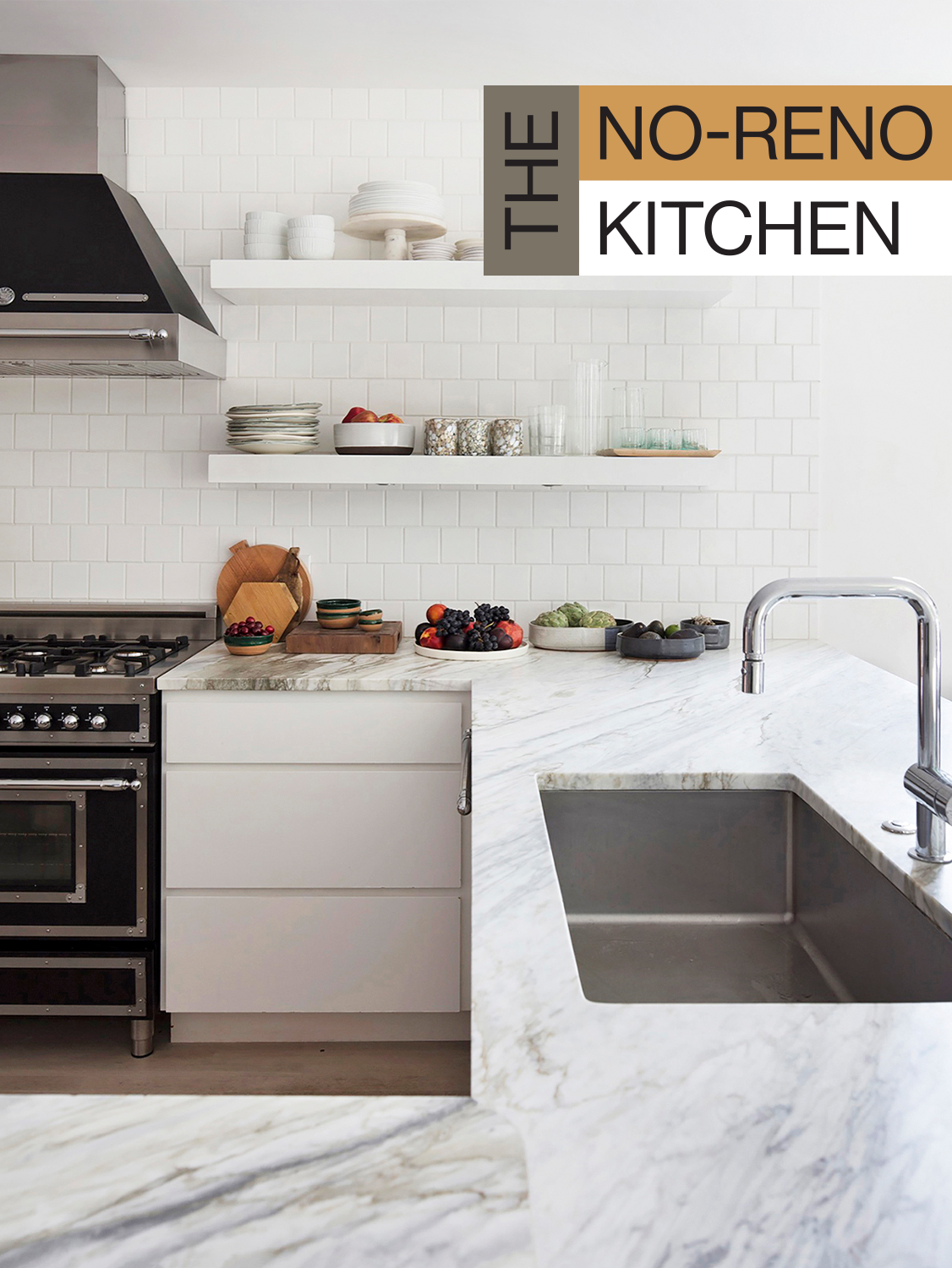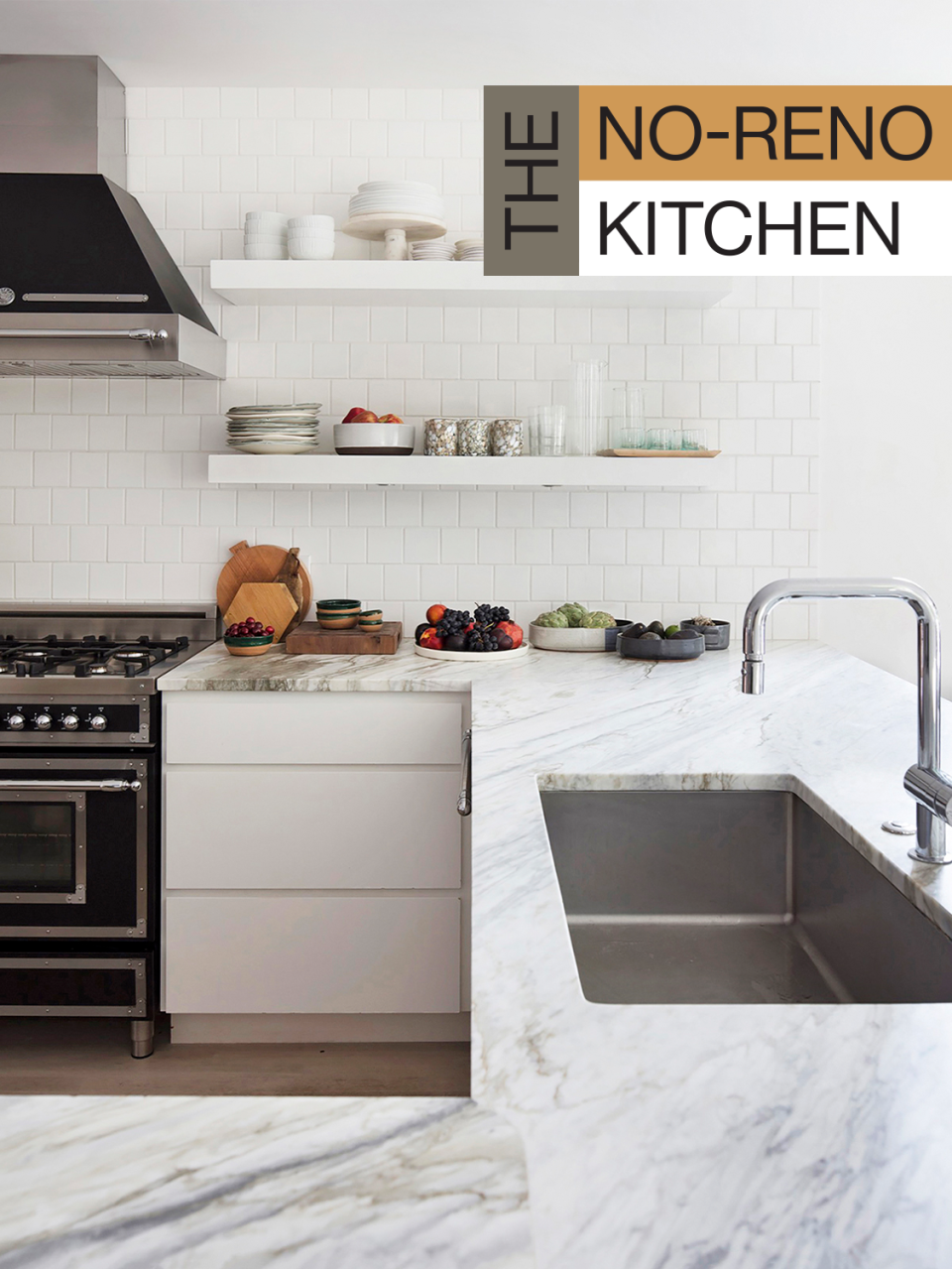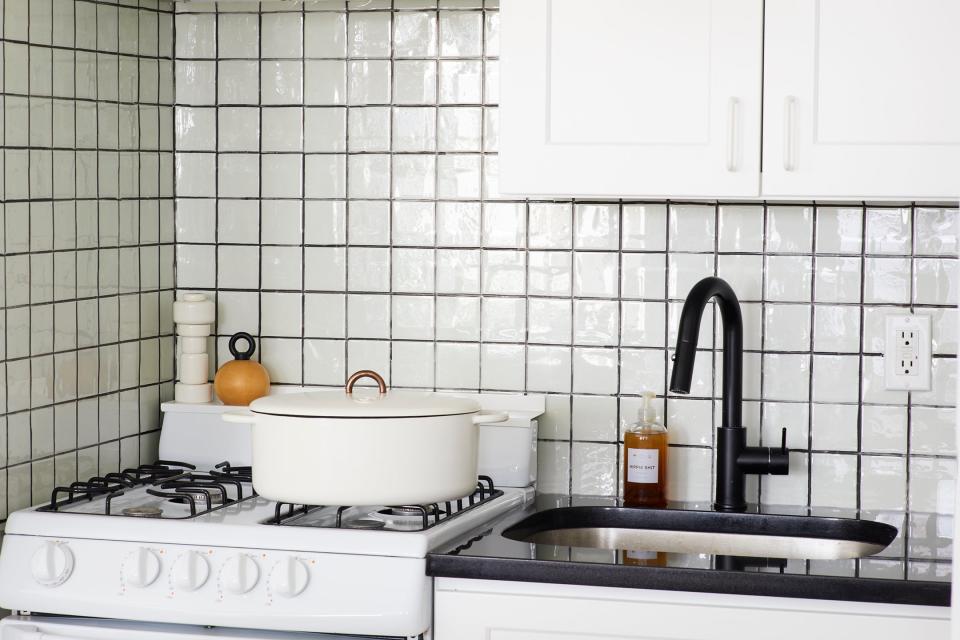We Asked a Pro Plumber: How Do You Swap a Kitchen Faucet on Your Own?


Corrosion, leaks, or sticky handles are a few signs you desperately need to replace your kitchen faucet with a new one. Just not liking the look of it is another totally valid reason. Whatever led you to the decision to replace yours, know that you might not have to wait to call a plumber to make the exchange. Replacing your kitchen faucet on your own is possible, says Carly Carey, a third-year plumbing apprentice at Erik Nelson Plumbing in Minnesota and a pro at Matriarchy Build. (Psst: You can book a consultation with Carey or any other Matriarchy plumber through the company's site if you want extra guidance). “As long as you have a shutoff that you know works, this is a job that any homeowner can do,” she says.
Going the DIY route can save you anywhere between $45 and $400 on labor costs, according to HomeAdvisor, but it’s also rewarding to take your renovation into your own hands—and get a little more familiar with the “spooky” cabinet underneath your sink. Carey walks us through the process, step-by-step, below.
The Supplies

100% silicone
New faucet (see our favorites here)
Adjustable crescent wrench
A tarp or rags
Step 1: Check Out Your Current Setup
Don’t head to the hardware store just yet. First, figure out what kind of faucet you need—your choices will be limited by the number of mounting holes present around your sink. In most instances, there will be one hole (for a single-handle faucet) or three holes (for a dual-handle faucet). “If you currently have three holes, you could buy a one-hole faucet that has a plate that would cover the other two holes, but you couldn’t go from one hole to three holes,” notes Carey.
Step 2: Get Familiar With Your Shutoffs
The only way this DIY is possible is if you have reliable, under-sink shutoff valves. If your home is older and does not boast the plumbing for you to isolate just the kitchen faucet's water connection, Carey recommends calling a professional to install a new shutoff for it, as it’ll save you headaches down the road.
Open up the cabinet below the sink and remove everything inside. You should see a few things: a PVC tube (the sink drain pipe) and two "threads" (your hot- and cold-water lines) connected to two pipes that meet either the wall or the floor. At these connection points, you'll likely see a knob or lever—these are your shutoff valves. If it's a knob, turn it clockwise to turn the water supply off. If it's a lever, flip it so it's perpendicular with the pipe.
Tip: A common mistake Carey sees homeowners make is not knowing where their home’s main shutoff is (or simply knowing if it works). Most likely, you’ll be able to locate it in the basement or garage (where the main water line from the city enters the house). “Plumbing can go wrong, so being able to shut off all the water is really helpful,” she says.
Step 3: Remove the Old Faucet

After you’ve successfully cut off your water access, drain the water from the current faucet by turning the faucet handles to the “on” position.
Lay down a tarp, paper towels, or rags on the floor and in and around the cabinet. Next, disconnect the assembly parts that are holding the faucet to the countertop above using an adjustable wrench. Then, with your wrench, detach the hot- and cold-water supply threads. There will probably be some residual water in them, so allow them to drain onto your tarp or towel until dry. Remove the mounting nuts that connect the faucet to the sink and take out the faucet.
Step 4: Clean and Prep for a Fresh Connection
Once the hoses are disconnected, clean the area where you’ve removed the faucet. Oftentimes, there will be some gunk built up or debris from corrosion. To ensure a watertight seal for your new faucet, Carey applies 100% silicone around the top surface of where the new faucet will go as well as the receipt underneath.
Step 5: Attach the New Faucet
Each faucet is different, so you’ll want to follow the instructions that come with the new fixture carefully. Typically, though, you’ll want to thread the new faucet down into the countertop hole(s) and begin reattaching the water-supply lines with your wrench, making sure that you attach the hot-water line to the hot-water valve and the cold-water line to the cold-water valve. It’s helpful to have an extra pair of hands around as you tighten the connections, as it’ll cause the faucet itself to twist and turn above. “Have I installed faucets by myself? Yes. Is it very easy? No, it's much easier when you have someone else around,” says Carey. Wipe up any of the silicone that might have seeped out of the sides underneath the faucet. Finally, slowly turn the water on and check for any leaks.

